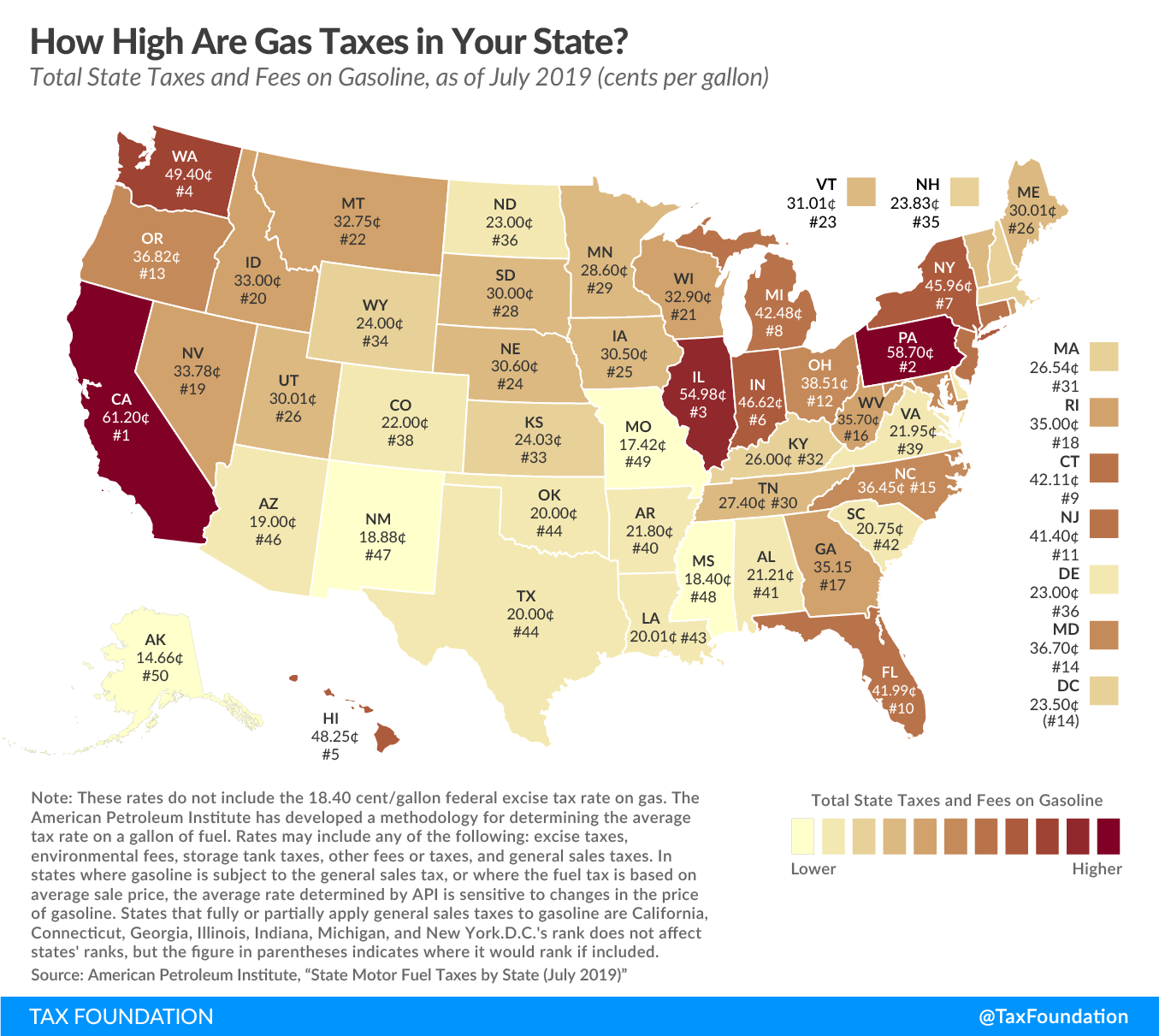Today’s map shows gasoline taxA tax is a mandatory payment or charge collected by local, state, and national governments from individuals or businesses to cover the costs of general government services, goods, and activities. rates in each state as of July 2019, using recently released data from the American Petroleum Institute.
States levy gas taxes in a variety of ways, including per-gallon excise taxes collected at the pump, excise taxes imposed on wholesalers which are passed along to consumers in the form of higher prices, and sales taxes that apply to the purchase of gasoline. The American Petroleum Institute accounts for these different approaches when it calculates the average tax rate on a gallon of gasoline in each state. These rates vary widely from state to state and can be seen in the map below.
Stay informed on the tax policies impacting you.
Subscribe to get insights from our trusted experts delivered straight to your inbox.
SubscribeCalifornia pumps out the highest tax rate of 61.2 cents per gallon, followed by Pennsylvania
(58.7 cpg), Illinois (54.98 cpg), and Washington (49.4 cpg). You’ll find the lowest gas tax in Alaska at 14.66 cents per gallon, followed by Missouri (17.42 cpg) and Mississippi (18.4 cpg).
While few taxpayers are cheerleading gas taxes, they do embody the “benefit principle” of taxation relatively well. This public finance concept holds that the taxes a person pays should relate to the government services that person receives. In general, drivers benefit from the government road services that their gas taxA gas tax is commonly used to describe the variety of taxes levied on gasoline at both the federal and state levels, to provide funds for highway repair and maintenance, as well as for other government infrastructure projects. These taxes are levied in a few ways, including per-gallon excise taxes, excise taxes imposed on wholesalers, and general sales taxes that apply to the purchase of gasoline. dollars pay for, like road construction, maintenance, and repair. Because gas taxes connect drivers to the costs of road upkeep, they encourage efficient road use, which helps limit congestion and the wear and tear that comes from overuse.
Gas taxes and other user taxes and fees are the most suitable revenue tools for generating the funds to maintain and repair public roads over time. But many states and the federal government don’t index those taxes for inflation, so the nominal value of gas tax revenue tends not to keep pace with infrastructure funding needs across the country. Governments serve their constituents well by keeping road construction and maintenance costs at reasonable levels. However, indexing gas taxes for inflationInflation is when the general price of goods and services increases across the economy, reducing the purchasing power of a currency and the value of certain assets. The same paycheck covers less goods, services, and bills. It is sometimes referred to as a “hidden tax,” as it leaves taxpayers less well-off due to higher costs and “bracket creep,” while increasing the government’s spending power. is a reasonable tool to create a stable source of revenue to fund infrastructure maintenance and repair needs for years to come, which helps states avoid leaning on general fund revenues and other less suitable tax sources to maintain roads and bridges.
Stay informed on the tax policies impacting you.
Subscribe to get insights from our trusted experts delivered straight to your inbox.
Subscribe